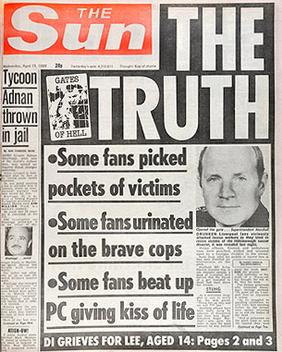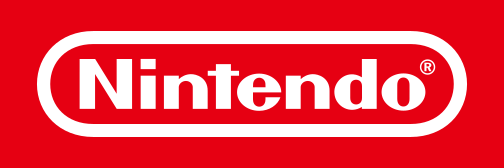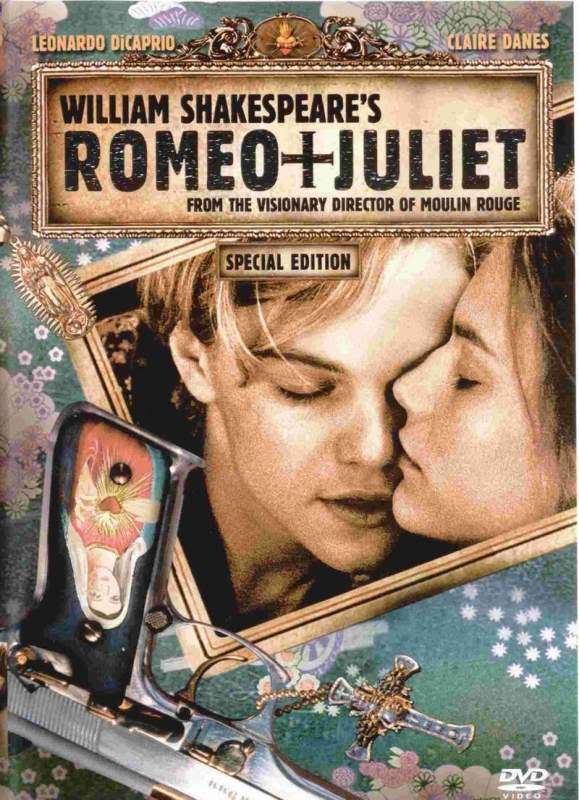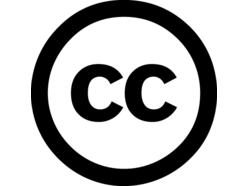Understanding structure and ownership in the creative media sector
The Creative media sector is made up of Film, TV, Radio, Publishing, Advertising and Marketing, Interactive Media, Games and Photo Imaging. This blog is to explain the structure and ownership of each of these sectors.for anyone interested in following a work path towards one of them.
The media sector is mainly built up on 6 major conglomerates. A conglomerate is a large corporation which owns many smaller companies. The 6 conglomerates together share 1500 newspapers, 1100 magazines, 9000 radio stations, 1500 TV stations and 2400 publishers between them. Conglomerates often build up by merging or taking over smaller companies. When two companies merge they are putting their work together to make one larger company and then equally share the profits. When a company takes over another it usually buys the other company so it earns any money from its business or will convert it into their own business.
The 6 conglomerates are:
Comcast
Newscorp
Disney
Viacom
Time Warner
CBS
The media sector is mainly built up on 6 major conglomerates. A conglomerate is a large corporation which owns many smaller companies. The 6 conglomerates together share 1500 newspapers, 1100 magazines, 9000 radio stations, 1500 TV stations and 2400 publishers between them. Conglomerates often build up by merging or taking over smaller companies. When two companies merge they are putting their work together to make one larger company and then equally share the profits. When a company takes over another it usually buys the other company so it earns any money from its business or will convert it into their own business.
The 6 conglomerates are:
Comcast
Newscorp
Disney
Viacom
Time Warner
CBS
Film
Film is a large industry which has around 27,000 employees. Film makes it's money from customers who go to the cinema to see the films, buy the DVD's and buy film merchandise. The money then made is paid out in fair shares to the theaters showing the film and shops selling merchandise, the film crew involved in making it and the distributors. Warner Brothers are currently the richest distributor by making $27,147,331,454 from 1995 to 2011. Some of the most popular Warner Brothers films are 'The Exorcist' and 'The Dark Knight'. Walt Disney follow them as they are only around $1 billion behind them. Big companies like these make their money by investing in the films. The distributors will have to help pay for the film production and then show the film to theaters who will want to play the film. The theaters will then make money from the tickets they sell and the other services like food and drink. They then give a lot of this money back to the film company.

Image from: http://www.projectcasting.com/tag/warner-bros/
Some films can be independent. These are films which have not been produced by any major film company such as Disney. Independent films are quite often low budget as the company funding it is not as big as the major names and therefore does not have much money to put into it. This is not always the case as independent films with good ideas can attract wealthy investors who do not own film companies and sometimes major film companies can distribute it. Some independent film companies are Miramax Films and Icon Films. There are some independent films which have become extremely popular and well known. These include Pulp Fiction and Slum Dog Millionaire. Pulp Fiction had a budget of around $8,000,000 and by 2012 had made around $107,928,762 in America alone.
Image from: http://upload.wikimedia.org/wikipedia/en/8/82/Pulp_Fiction_cover.jpg
TV
The Television industry is the second largest of the media sector with 55,800 employees. In the UK, there are 4 broadcasters that dominate the TV industry. These 4 are: BBC, ITV, Channel 4 and Channel 5.
The BBC is the only publicly owned company out of the four. Public ownership means that the company does not make money as it is all put back into running the company and paying employees. It is funded by the TV license. This is paid by anyone who wants to watch TV broadcasts. This does not only apply for television's. A TV license is needed to watch broadcasts on any device such as computers. The price of the TV license is £145.50 for colour broadcasts and £49.00 for black and white. The TV license has been frozen at this price meaning it is not going to change and it is the same for everyone. The £145.50 is roughly split between the BBC by giving £95.52 to TV, £25.32 to Radio, £7.92 for Online and £16.80 to everything else. The advantages of having the TV license is that the BBC do not need to take money from advertisements therefore there are no advert breaks during programmes. This is an advantage as the programme you are watching is not constantly being interrupted with breaks every 15 minutes or so. Another positive is that due to everyone paying the license, the BBC have multiple channels for every different kind of person. There is programmes shown which everyone can enjoy. For example BBC three play shows which are aimed at teenagers and younger years as they show things like 'Family Guy'. BBC Two on the other hand is aimed at more middle aged viewers as they show programs like 'Homes Under The Hammer'. Something that younger viewers may not be interested in. The TV license is not all good. Many people have problems with the price of it. Although it has been frozen and will not raise in price, the cost of living is rising. This is a problem as people will have less money to pay for the license as they are paying for living costs, leaving them with less money at the end of the day. Also, not everyone earns the same wage yet everyone pays the same price. Someone who is earning a low wage may think of a TV license as a luxury as it costs too much to pay for and still buy essentials like food. Some people think a better way to handle this is a discounted price based on the household income. Another change that can be applied to the license is to have a limit on the amount of TVs that can be paid for under one license. One person can own 100 TVs and still pay the same as someone with 1. If someone can afford to pay for a lot of TVs then they can surely afford to pay for more than one license.
Image from: https://twitter.com/BBC
The other 3 broadcasters are all privately owned companies. This means they show their programmes to make money. They make their money through advertisements. This is other companies who pay the TV broadcasters money to advertise their business or product on television. ITV is the biggest competition to the BBC. Both channels play similar programmes at similar times so that they can battle for viewers for example, BBC shows 'Eastenders' and ITV shows 'Coronation Street' and 'Emmerdale'. All 3 are soaps which each earn millions of viewers every time they are aired.
 Image from: https://twitter.com/ITV
Image from: https://twitter.com/ITV
In the UK we have such services like Sky, Virgin and BT. By paying for these services, we are provided with more channels than the original 5 and Freeview. Sky works using a Satellite which transmits a TV signal to our TV's and is one of the most popular television providers in the UK, its main competition coming from Virgin. Since these have been introduced, there has been advancements in television such as being able to record programmes and have high definition channels.
 Image from: http://www.world-of-accessories.co.uk/with-remote-control-p-898.html
Image from: http://www.world-of-accessories.co.uk/with-remote-control-p-898.html
Radio
Radio is one of the smaller industries compared to others with only around 22,000 employees. Radio was once one of the biggest industries however advancements in technology have increased the demand on things like Internet. For this reason many people believe that the employee count will decrease within time. With Internet around, many people would rather use that to, for example, listen to music or watch sports than tune in to a radio. Internet and television provide a visual image which a radio cannot do. For that reason, less radios will sell and radio stations will get less listeners therefore going bankrupt and letting go more employees. This is not necessarily the case as radios will always be wanted for vehicles. A driver cannot watch a broadcast when driving therefore it is handy for them to have some noise in the background. Another positive of the radio is that it is a continuous broadcast therefore it does not take effort to play one which is why radios will always be in demand,
Like TV, the BBC own a lot of radio stations. Being a publicly owned company, £25.32 of each TV license goes into the radio stations they own. Also like their TV channels, they do not play advertisements as they are a non-profit network. The BBC have many stations for all different people. Radio 1 aims at younger viewers and plays music that is popular at the time. Radio 2 on the other hand aims at a slightly older age group and plays music from the past few decades. The BBC also have local radios. These are all set for certain regions in the UK and they discuss local news and events as well as playing music. An example for a local radio is BBC Radio Newcastle or BBC Radio Derby. The BBC is not only focused on radio as they work on TV as well however there are some other non-profit stations which do focus on only radio. These are usually run by volunteers and the station itself does not often cover a wide area. An example would be a hospital radio.
Image from: http://www.tvforum.co.uk/thegallery/sick-tired-bbcs-branding-v3-39415/
There are two different types of radio station, commercial and non-commercial. The BBC is a non-commercial station as it makes it's money from the license and subscriptions. A commercial radio station is a station which earns from advertisements. The advertisement companies choose the station they want to advertise on by the target audience of the station and the amount of listeners. If a product is aimed at younger viewers then the advertisers will choose a station aimed at a younger audience. They would also want to choose a station with a lot of listeners so there product or business is shown to more people. The more popular stations generally charge more so it is usually rich businesses who advertise on these. Commercial radios include Capital FM and TalkSport.
Image from: http://www.utvmedia.com/
Radio channels are now available on more than just radios. They are now accessible on other devices like smart phones and computers. There are radio apps for phones and you can catch up on radio programmes you have missed on the Internet. BBC Iplayer allows you to listen to all the BBC stations.
Games
The games industry has employed around 10,000 people. This is one of the smallest in terms of employee size. The first ever game was a game called 'Tennis For Two' or 'Pong'. This game was very basic. It involved two lines hitting a ball from side to side. Like Tennis. This was developed and created in the 1950's. Games have come along way since then. They are a lot more complex than they were. Not only have games become more meaningful and interesting, there is also new technology that allows the user to have maximum entertainment from their video games. For example, the Nintendo 3DS allows the user to view games in 3 dimensions and the Xbox Kinect allows the player to be the controller.
The oldest gaming industry and now the largest is Nintendo which is based in Kyoto, Japan. Nintendo was originally founded on 23rd September 1889 by Fusajiro Yamauchi, originally creating handmade playing cards. Before they became a video game company, Nintendo had tried to run many smaller businesses such as cab service and love Hotels. In the 1970's, Nintendo decided to focus their business on video games. Nintendo released many games to start but their company got the most luck when they released 'Donkey Kong' in 1981. This proved to be their most popular game which also helped them in the long run as it introduced the character 'Mario' (then known as JumpMan) who later became the company mascot. Nintendo also introduced the first handheld gaming device. This was called 'Game and Watch' which was distributed worldwide. The iconic d-pad was also later developed on this as a new Game and Watch was created for a handheld Donkey Kong game.
Sony, also a Japanese company, have become the closest rival to Nintendo over the years. Sony are responsible for the PlayStation. They first started with video games when they released the first PlayStation in 1994. The original PlayStation was the first games console to sell 100 million units. It achieved this after 9 years and 6 months after it's release. Another contender to Nintendo is Microsoft's video game brand of Xbox. This is the youngest video game brand as they didn't release their first console, the xbox, until 2001. Although they were the latest to create a games console, Xbox made a breakthrough as the Xbox was the first console that used an online service by the name of 'Xbox Live'. This allows players to play games with other people who own an Xbox and any game with online compatibilities. Xbox, Playstation and Nintendo have all been battling for customers since the Sixth generation of consoles.
Sixth Generation:
Sony PlayStation 2-2000
Nintendo GameCube-2002
Microsoft Xbox-2002
Seventh Generation:
Microsoft Xbox 360-2005
Nintendo Wii-2006
Sony PlayStation 3-2007
Eighth Generation:
Nintendo Wii U-2012
Sony PlayStation 4-2013
Microsoft Xbox One-2013
 Image from: http://en.wikipedia.org/wiki/Video_game_console#mediaviewer/File:PSX-Console-wController.jpg
Image from: http://en.wikipedia.org/wiki/Video_game_console#mediaviewer/File:PSX-Console-wController.jpgPublishing
Publishing is currently the largest industry in the media sector. It has 148,000 employees. The publishing area mainly consists of newspapers, magazines and books. The Industry generally earns their money by actually selling their created products and other ways such as advertising. In a newspaper you will often see advertisements from different companies and individuals who are looking to promote something like a product or a business. They will have to buy a section of the newspaper to advertise in it. Anyone is allowed to advertise in a paper, many people use the paper to advertise peoples birthdays or remember someone who has passed away by adding an obituary.
One of the most popular newspapers in the UK is The Sun. This is a newspaper owned by Rupert Murdoch's News Corp. In 2013, it was the most popular Saturday newspaper with a daily readership of 5.5 million between July and December. By the end of the year, it had been overtaken by Daily Mail. In March 2014 The Sun had an average daily circulation of 2,069,809 copies. The Sun has also recently made a new version called The Sun On Sunday. This was created on 26th February 2012 to replace the News Of The World which had to be shut down due to the information leak of the phone hacking scam. The Sun On Sunday had an average circulation of 1,686,840. The Sun has become well known for being involved in so many controversies. One of it's most famous is the cover of the Hillsborough disaster on the 15th April 1989. The Sun posted a front page article named 'The Truth' where they made statements given to them from certain individuals. This sparked outrage in Liverpool and The Sun lost three quarters of it's 55,000 daily sales in that area. Even today some newspaper stores refuse to sell it.
 |
| Image from: http://en.wikipedia.org/wiki/The_Sun_(United_Kingdom)#mediaviewer/File:Hillsborough_disaster_Sun.jpg |
As well as the well known mainstream publishers, there are also independent publisher companies. One of these is Cillian Press based in Manchester. This company mainly focuses on books. There job is to take authors books and publish them in an attempt to make them successful. They use different marketing strategies for each piece of work to aim to sell the book as much as possible and spread the name of the author and their titles. This is useful for new authors who struggle to sell their books to the larger companies.
| Image from: http://cillianpress.co.uk/ |
Advertising and Marketing
Advertising is a very important part to media. Although it only has 17,000 employees it is still a large industry. Companies come to the advertising and marketing industry when they are looking to sell a product or get a message out. By advertising, companies can increase their popularity or spread the word of a new product. This is generally to increase their sales. One of the main sources of advertising is on TV. The advertising companies that work with TV create adverts for companies that will be aired on different channels in between programs.
WPP is a British Advertising and marketing company that is located in London. It is currently the largest advertising company in the world. As of 2013 it had a revenue of £11.019 Billion and currently has 3000 offices in 111 countries. It's aim is to use different marketing techniques to make clients as successful as possible. An example of one of the marketing techniques is to handle any money problems a company may have so they can give their time to focusing on their main ideas. They would also help to advertise the company when their ideas are perfected to try and get people interested in buying in. After the company has made money, they would then give some of it to WPP which is how they make their money.
 Image from: http://www.wpp.com/wpp/
Image from: http://www.wpp.com/wpp/There are also independent marketing companies. These do the same jobs as the more mainstream companies however may focus on smaller business as they do not have much money to spare. One of these companies is Active Independent Marketing located in Northampton. They look at ideas from peoples, decide whether they have potential to do well and then if so, discuss with the client how they can get them where they need to be in terms of business.

Image from:http://www.activeindependentmarketing.co.uk/
Animation
Animation first came around in Britain in the late 19th Century. It employs the least amount of people out of all the media sectors with only 4,700 employees. The animation company earns it's money in a similar way to films. A lot of animation are actually films and therefore earn money from ticket sales and merchandise. Animation covers a lot more than just films. Animation can be seen in other things like advertising and TV. Animation has been around for a while now but has seriously developed over time. It has got better in terms of quality as the technology used to make animations has seriously developed. The first animations came around in the early 20th century. One of the most well known animated characters, Mickey Mouse, was first introduced in 1928 in a episode named Steam boat Willie. Since then Disney have then moved on to become one of the biggest companies in the animation sector. They are also considered to have created the first ever animated feature film which was 'Snow White And The Seven Dwarfs' which was created in 1937. This is considered the first as it is the first to have been created using completely hand drawn images. The ones that came before this used silhouettes, cut outs or stop motion.
Aardman is a private animation company located in Bristol. They are famous for using clay models to make stop motion animation. The company was founded in 1972 and has made many TV series and films since then. A lot of these have become well known such as Morph and the Wallace And Gromit series. The Wallace And Gromit productions are probably the most well known work from Aardman and have led to the creation of short films, one feature film, TV programs and even a spin off show. Aardman have even won oscars for some of their Wallace And Gromit productions. Aardman earned £53.5 million in december 2010, this is a 68% increase from the previous year where they made £31.8 million.
Interactive Media
Interactive media involves computer based items which allow the user to control things such as videos, games, music and more applications. It has around 50,000 employees. Interactive media is usually on handheld items such as smartphones. The industry aims to give people the freedom to use their digital items as easily as possible. A good example of where interactive media comes in to place is using a touch screen so the user is not restricted by buttons and can instead use their device how they want. Interactive media can be found everywhere nowadays. Most up to date technology has some sort of interactive media in it. Things like TV's even involve interactive media. TVs that have big satellite providers like Sky or Virgin allow the users to record programs they like and even do things like play games using their remote. Anything that allows the user to get involved with their technology is classed as interactive media.
Mentor Digital is an interactive media company located in Bristol and London. They mainly work on web design and software development which involves interactive media. One of the projects they worked on was English Heritage-Stonehenge. The company were approached to make an interactive resource which would help viewers learn the history of Stonehenge. To do this they used pictures and videos that the user could interact with so that it would seem like a more fun and interesting thing to learn about. They also worked on a Bloodhound project. This was based on the bloodhound car. The interactive side allowed users to look at how the car was made and see if they could change it to make it faster.
 Image from: http://umbraco.com/certified-partners/browse-solution-providers/mentor-digital
Image from: http://umbraco.com/certified-partners/browse-solution-providers/mentor-digitalPhoto imaging
The photo imaging sector has 44,000 employees. The whole business focuses on taking images and editing them. There have been many different computer programmes created to help with editing images. The main one would be Adobe Photoshop. Photoshop is a large product which was introduced on 19 February 1990. It allows the users to take photos and images and edit them with a wide variety of tools. Photoshop is used in many companies. One of the most popular ones is in the magazine industry. These companies edit images in their magazine to make them look appealing to the customers. Advertising uses a lot of photo shop also for the same reason. This helps as viewers would see the edited image and would be more attracted to buy the product. For an individual, the regular Photoshop costs around £8 a month or around £105 a year at the this time. There are also other versions of Photoshop which come with different prices such as Photoshop Lightroom and Photoshop Elements.
THP are a photo imaging company based in London. They mainly focus on using photo imaging to advertise. Other companies will come to them with a product they want advertising and then THP try and take the best images and edit them to make them look as attractive as possible by using high quality cameras. They mainly work on advertising businesses themselves rather than the products. They have worked with well known banks, lawyers, insurance companies, events and more. Some of the photo imaging techniques they use are: using natural and artificial light, balancing room colour temperature and lens adjusting.

image from:http://aveley.cylex-uk.co.uk/company/thp-photo-imaging-16613275.html
In conclusion, the media sector contains many more industries than you would think. Some of the less well known parts are actually larger than the more popular industries. For example Interactive media is not heard of much yet has 50,000 employees whereas everyone knows of the games industry yet it only has 10,000. From this it is important to consider each industry when looking into media as there is something for everyone's interest meaning there is always a path to go down for future work.


















 Image from: http://www.copyrightauthority.com/copyright-symbol/
Image from: http://www.copyrightauthority.com/copyright-symbol/



